





12 unusual, but very useful vegetables
It is possible to find the extensive range of fruit and vegetables in modern shops. Russians already got used that on counters there is not only a seasonal domestic production, but the vegetables and fruit which are grown up in the countries with more comfortable conditions of cultivation at all seasons of the year. However what we see in shops and in the vegetable markets, is only a small part of those edible plants with which the nature is so rich. Today we want to acquaint the reader with rare and very useful vegetables which gradually become available and for the domestic consumer.
1. Forbidden rice
One of the types of rice cultivated in China. In the past it was available only to the aristocrats belonging to royal family.
The product has a specific appearance: in the course of cooking its coloring changes from black to dark-violet. Taste of the prepared grain is very peculiar and very attractive as it has the expressed nut shade.
This grade of rice much more surpasses other kinds of a popular cereal in the content of vitamins and microelements (iron, zinc, magnesium and calcium).
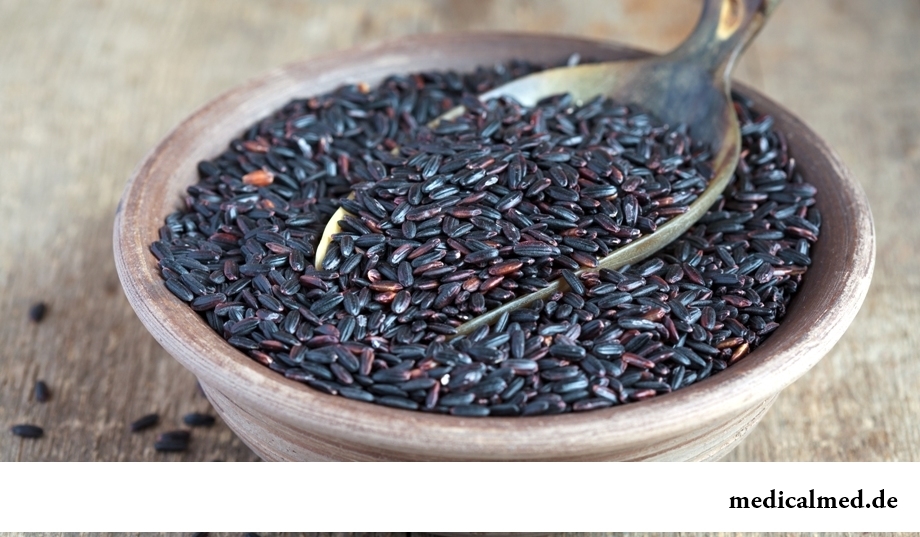
2. Water-melon radish
The root crop has a white or greenish skin and bright pink pulp. The sizes it is slightly more, than at usual grades of a garden radish: diameter reaches 7,5 cm. Taste is moderately acute, pleasantly bitterish.
The water-melon garden radish is rich with copper, magnesium, potassium, calcium, ascorbic and folic acid. In salads it is well combined with fresh cucumbers and various greens.
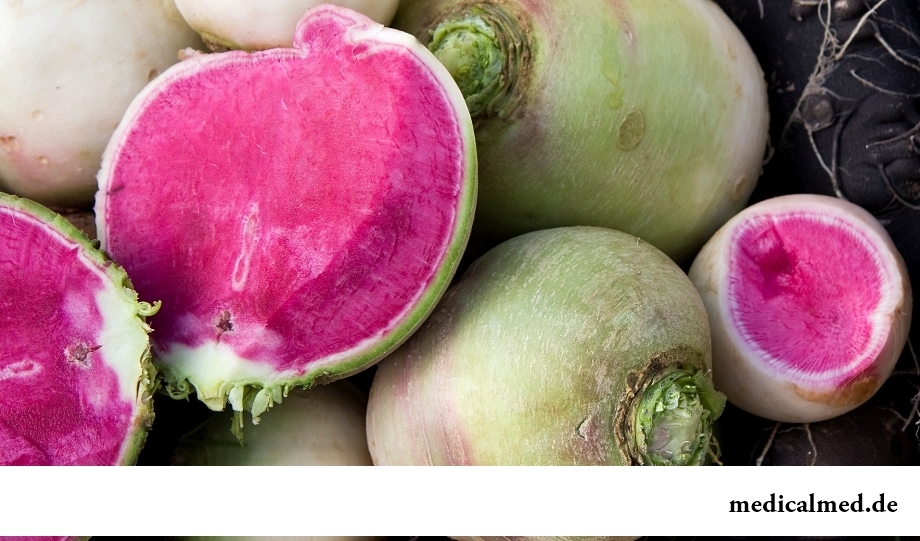
3. Vee-bi pumpkin
Sweet, small (the size about average orange) tykovka of bright orange color. Contain a large amount of beta carotene, magnesium, calcium, phosphorus and potassium. Are irreplaceable in dietary food.

4. "Chocolate" pepper
Exotic modification of sweet (Bulgarian) pepper. Fruits in a stage of biological ripeness have a skin and pulp of chocolate color. Because of high productivity the plant is extremely popular in the USA. Fruits contain a rich set of vitamins and the increased concentration of sugars.

5. White "egg" eggplant
Rare grade of an eggplant which is grown up in Japan. Fruits have the ovoid form and white coloring. They perfectly are suitable for preparation of vegetable stews, are well stored in the frozen look.
Pulp of an egg eggplant has practically no bitterish smack and differs in a gentle consistence.
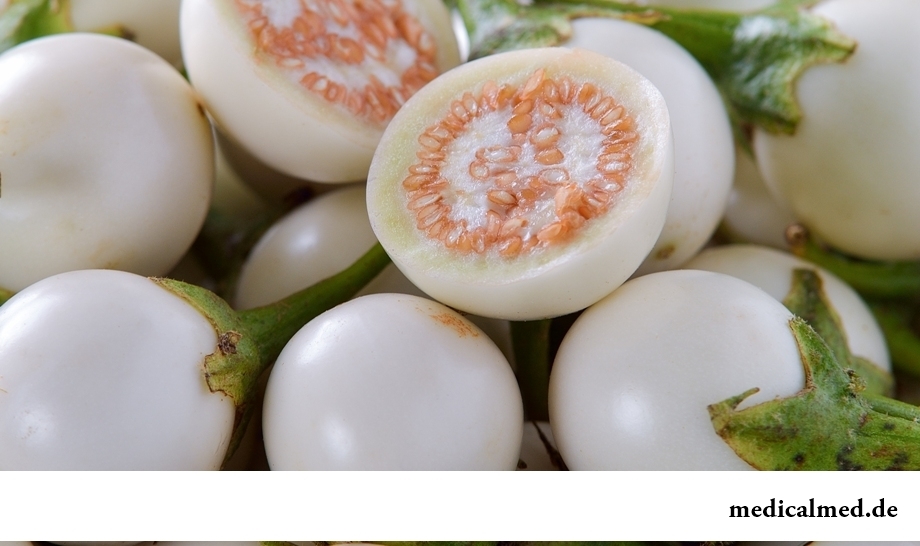
6. Lilac cauliflower
The kind of a cauliflower removed by the Italian selectors. As well as white-fruited grades, more usual for us, a large amount of vitamins, microelements and cellulose, necessary for normal digestion, contains. Is an important component of dietary kitchen.
Lilac color of edible inflorescences is caused by availability of anthocyans which are extremely useful to maintenance of health of heart and vessels.
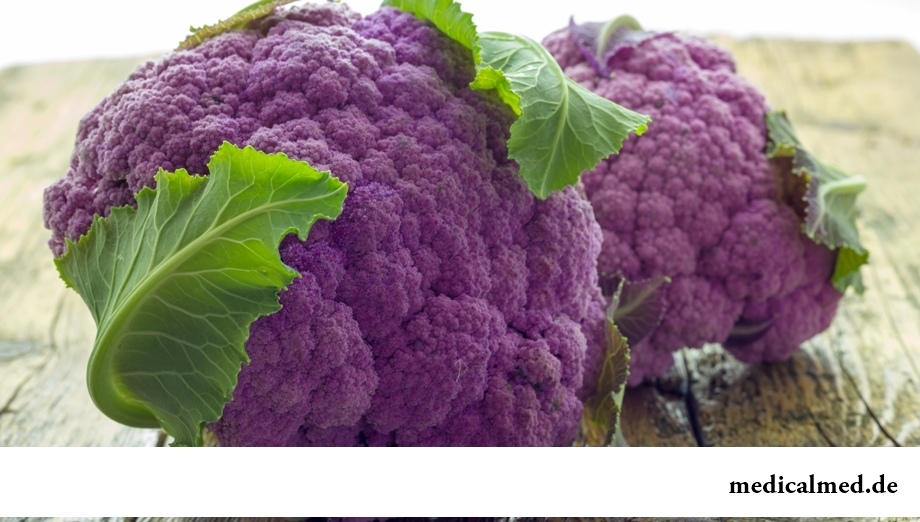
7. Gold-rush zucchini
Very productive variety having more dense pulp and smaller quantity of seeds, than other vegetable marrows. Almost it is not damaged by insects and it can be cultivated without use of chemical means of protection.
The skin of fruits has yellow-orange color, and pulp – soft, gentle taste that allows to eat zucchini in the raw, with preservation of all useful properties.
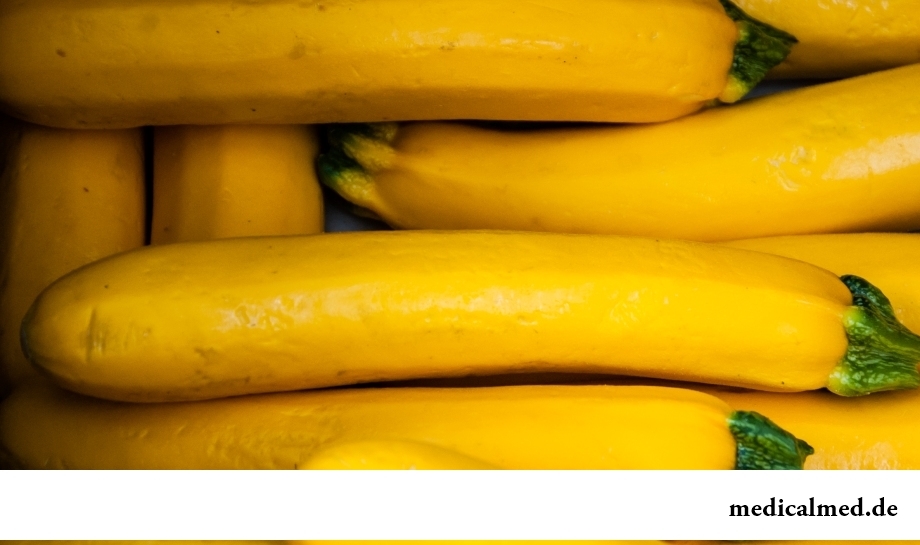
8. White beet
The root crop contains the same set of vitamins, as usual red grades. Pulp and a skin at this look white, and taste – sweet, but not having a specific shade because of which many do not love red beet.
The product is good both in crude, and in the boiled or baked look. Well regulates digestion processes; pulp is rich with potassium, phosphorus, manganese, iron and magnesium.
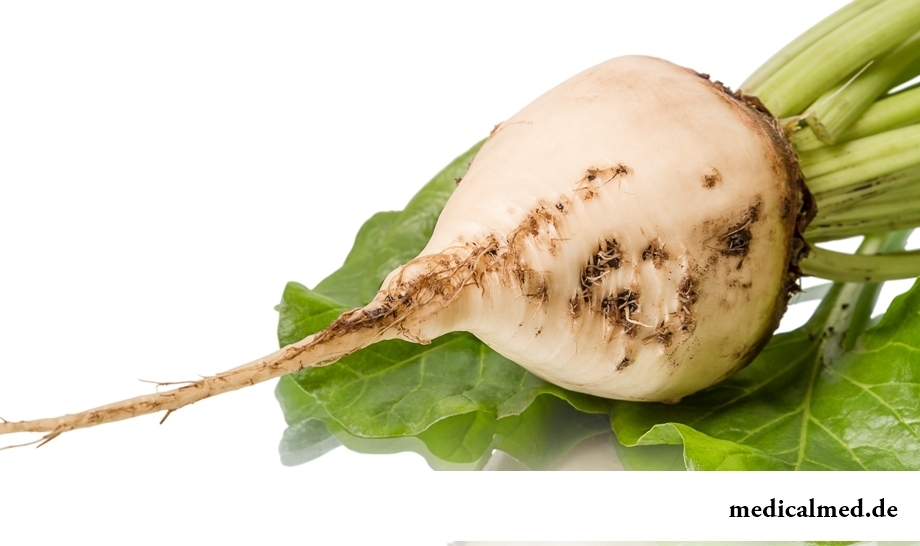
9. Hopa corn
Grains of this grade have dark blue color. They are not less useful whether they than corn of white yellow versions, but have more gentle, sweet taste with a nut shade.
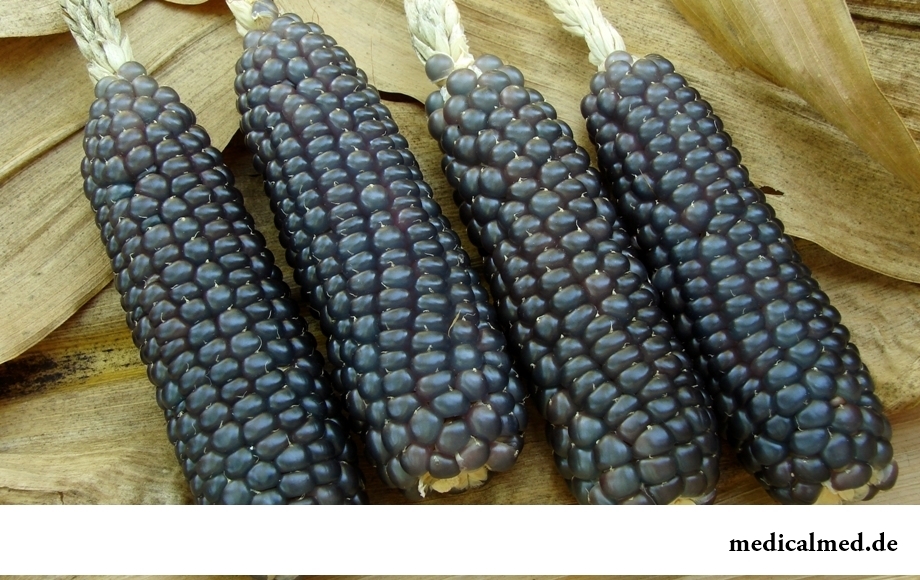
10. Violet potatoes
Recently this grade becomes more and more popular. Its coloring is caused by the high content of the anthocyans painting pulp and a skin in saturated violet color and being powerful antioxidants. The regular use of such potatoes helps to slow down aging processes, to increase immunity and to reduce probability of development of malignant new growths.
However, violet potatoes not only are useful, but also are extremely beautiful. At thermal treatment exotic coloring of tubers remains.
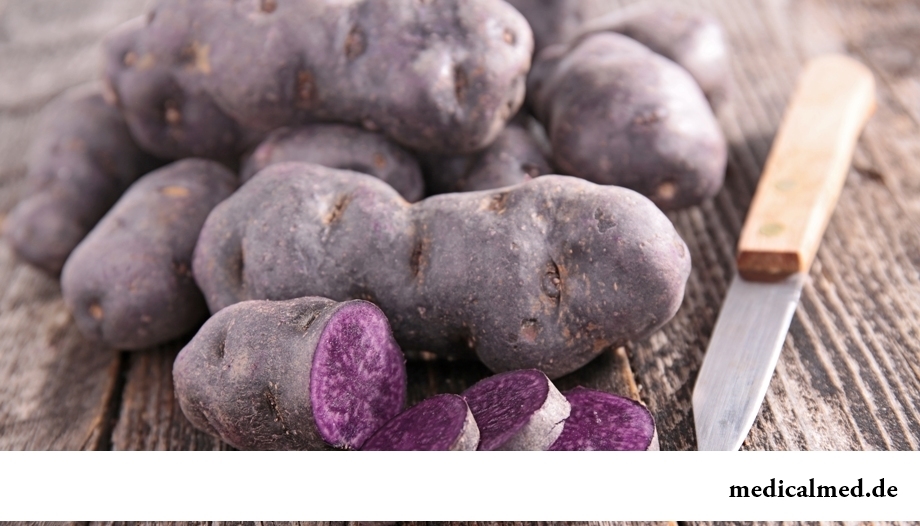
11. Melotriya
Plant of family of pumpkin. Represents a liana which, despite a tropical origin, can be grown up also in middle latitudes. Except magnificent option of vertical gardening, the melotriya is capable to please the gardener with the fruits similar to tiny arbuzik, and edible tubers.
Melotriya fruits to taste are similar to cucumbers. They are rich with useful cellulose, microelements and vitamins, and are especially attractive to the people aiming to lose weight: energy value makes only 14 kcal on 100 g. Use fruits in the raw (in salads), and also salty and marinated. Inclusion of a melotriya in a diet promotes clarification of a liver, decrease in concentration of "harmful" cholesterol, improvement of a condition of walls of vessels.
Plant tubers are very useful too. In the raw they on taste remind something between a sweet radish and a cucumber.

12. Balsam apple
One more plant belonging to family pumpkin, becoming more and more popular among the Russian gardeners. It is a powerful liana on which fruits, in a form similar to the extended melons ripen. Pulp to a balsam apple is tasty and nutritious. It contains proteins, sugar, cellulose and a big set of vitamins. It is eaten in a fried, stewed and boiled look, and also in mix with other vegetables.
But there is more to come. In the thickness of each fruit the seeds concluded in a fleshy bright red cover are located. These fragrant and sweet berries remind tropical fruit. Eat also the dried-up seeds: they are milled in the powder having taste of hazelnuts.
In cookery and medicine of the people of India the balsam apple is used very widely. It is considered that its inclusion in a diet helps to activate production of insulin, to reduce the content of sugar in blood, to cure cardiovascular and gastrointestinal illnesses, to slow down aging. Salutary properties to a balsam apple are recognized also as official medicine.
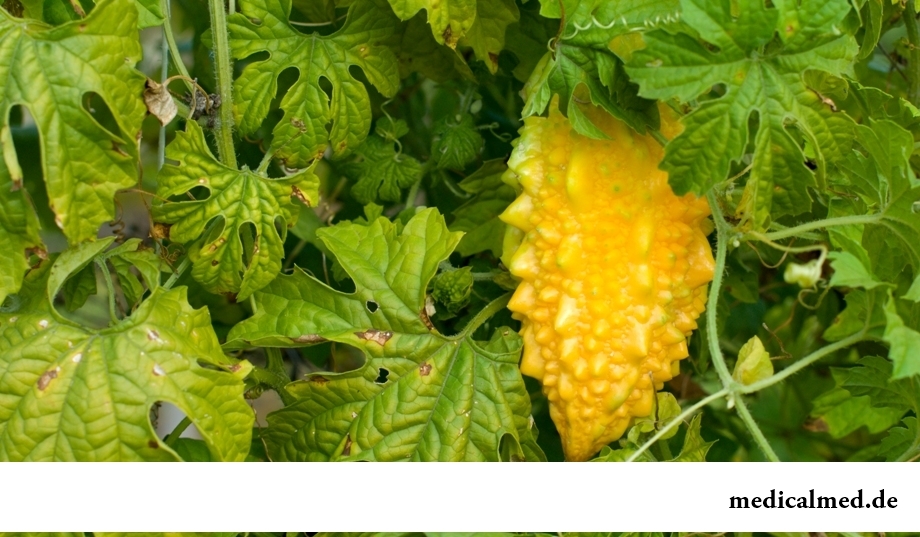
Landing material of the described plants gradually appears in the Russian shops. Cultivation of some of them has the difficulties, but for the person aiming to enrich a diet of the family with useful and tasty products there is nothing impossible. Citizens should not consider themselves deprived too: many edible vegetable novelties can already be met on counters of shops.
The use of fruits of exotic plants demands care. The people inclined to an allergy have to be especially attentive. You should not offer not tested products to the small children, elderly people and patients having heavy chronic illnesses. Anyway, it is necessary to enter into a diet unfamiliar food gradually, in the small portions, monitoring reaction of an organism.
Caries is the most widespread infectious disease in the world to which even flu cannot compete.

Beauty shop – the place which is associated only with positive emotions: joy, pleasure, relaxation. One...
Section: Articles about health
For many women the word "fat" sounds as a sentence. In aspiration to an ideal figure they try to exclude, first of all, from the menu all dishes containing fats without having at the same time a clear idea of a role of these substances in exchange processes, and about an afterbirth...
Section: Articles about health
Any of us is not insured from a heavy illness of the loved one. Happens and so that someone from family members becomes the bed patient, and remains in such state for a long time. It extremely suppresses both the most injured, and all its house which life considerably changes....
Section: Articles about health
Partial and the more so full loss of hearing significantly reduces quality of life. Difficulties with communication lead to loneliness and замкн...
Section: Articles about health
The depression not without reason is considered one their main troubles of our century: for scientific and technical progress, acceleration of rate of life and a surplus of information of people it is forced to pay with stresses, negative emotions and weakening of protective forces of an organism. As a result ш...
Section: Articles about health
The technique of acupuncture (acupuncture) is used in the medical purposes more than three and a half millennia. It is eurysynusic and recognized as official medicine in the majority of the developed countries of the world. Influence by fine needles on so-called points of acupuncture contributes to normalization of a metabolism and hormonal background, activates protective forces of an organism, has anesthetic and antiinflammatory effect, stabilizes a condition of mentality....
Section: Articles about health
Sugar - the digestible refined product which is not of special value for an organism of the modern person. Use...
Section: Articles about health
The sudden heat on all body which is followed by perspiration and a cardiopalmus – the phenomenon familiar to many people. Most often such states called by "inflows" result from nervous or physical overworks and disappear right after rest. Odn...
Section: Articles about health
What will only not be thought up by persons interested to have a beautiful figure. Here the last innovation – for weight loss needs to be eaten greasy food. Let's understand whether there is at a fatty diet common sense....
Section: Slideshow
The saying "the rich do not know how the other half lives" is known to all. In a broad sense it is that we can not always understand the person, about...
Section: Articles about health
At this plant there are a lot of names: tuberiferous sunflower, Jerusalem artichoke, solar root, earth pear. Contrary to popular belief, it is not an exotic plant at all. The wild girasol grows in a midland of Russia practically everywhere: at the edges of roads...
Section: Articles about health
Vitamin complexes belong to the most popular drugs, probably, in our country there is no person who was not hearing about advantage of vitamins and never their accepting. The more vitamins, the better, we consider and as it appeared, cruelly we are mistaken. Whether vitamins, whether so harmlessly general hobby for polyvitaminic complexes and whether it is possible to do without them are so useful? Let's try to understand....
Section: Articles about health
Zone hypostases under eyes - very widespread problem giving to people is a lot of inconvenience. Hypodermic fabric in these parts having...
Section: Articles about health
With age in a human body harmful substances collect. We receive them with food and water, at inhalation of the contaminated air, reception of medicines, use of household chemicals and cosmetics. A considerable part of toxins accumulates in a liver, osnovno...
Section: Articles about health
Musicotherapy – a treatment method which caused and causes a set of a controversy concerning its efficiency. However the facts are relentless: during the numerous researches curative impact of music on an organism was scientifically confirmed. Since then in a number of the countries the technique is included complex therapy of diseases of cardiovascular and respiratory system, dorsodynias and a backbone, psychosomatic disturbances and many other illnesses. The musicotherapy in a pedi is especially widely applied...
Section: Articles about health
The main role in development of a peptic ulcer of a stomach and duodenum the bacterium Helikobakter plays pilor. Activity and Wuxi...
Section: Articles about health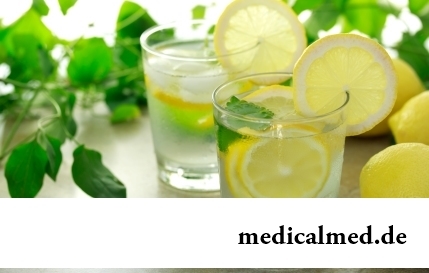
Water with a lemon - idle time in preparation drink which supporters of a healthy lifestyle already managed to appreciate. Used in a warm look and on an empty stomach, it is one of the most useful prophylactics allowing to prevent tens з...
Section: Articles about health
Tick-borne encephalitis – one of the most dangerous viral diseases which causative agents transfer and is given to people by ixodic mites. These are the small blood-sicking insects living in the considerable territory of our country. The person bitten by a tick can catch also erlikhiozy, bartonnelezy, babeziozy, mycoplasmosis and Lyme's disease. As well as encephalitis, these illnesses affect the central nervous system, and as specific antiviral therapy does not exist, the forecast very to a neuta...
Section: Articles about health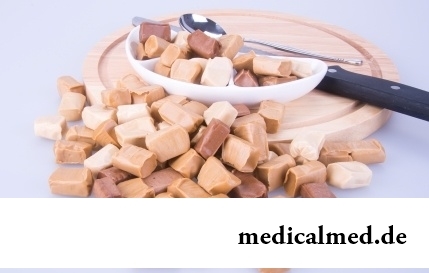
Food with the increased content of sugar is attractive to most of people - it is scientifically confirmed fact. Business here not in a nevozder...
Section: Articles about health
Eyes – one of the most vulnerable areas on a face therefore age changes concern them first of all. Whether it is possible to keep look youth for many years and what procedures are offered for achievement of this purpose by cosmetologists? And maybe, only thing of a vari...
Section: Articles about health
Diapers for adults – individual one-time means of hygiene which in some situations is irreplaceable and from such situations any person is not insured. Though nobody perceives need of their use with enthusiasm, however without such means already problematic situation could be heavier....
Section: Articles about health
Not everyone can brag of the shining Hollywood smile. Even at the person who is regularly visiting the stomatologist and watching з...
Section: Articles about health
They say that to ensure health and longevity of people it is obliged. Really, at competent approach to these questions, minimization of an adverse effect of many factors does not represent a special problem. Practically everyone has an opportunity to play sports...
Section: Articles about health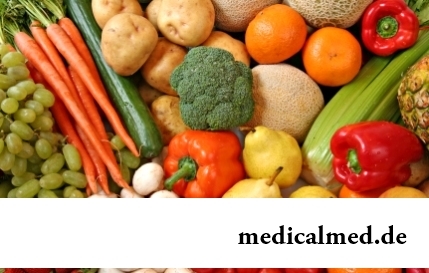
Color of plants is caused by presence at them of certain chemical compounds. Let's talk about what is meant by various colors of vegetables and fruit and what properties they give them....
Section: Articles about health
Healthy lifestyle today in fashion, and many parents think of that the child from the early childhood played sports. To a Torah...
Section: Articles about health
Sooner or later hair turn gray at all. Many people try to hide these changes, returning natural color of the hair by means of coloring, or considerably changing it for the purpose of creation of absolutely new image. All know that the gray hair is a sign приближающ...
Section: Articles about health
Frosty air, fresh wind and easy snowball at most of Russians are associated with cheerfulness, health and cheerful entertainments on which our winter is so generous. But, unfortunately, cold season sometimes brings also troubles with health. It is not about seasonal colds and frostbites, and about those chronic illnesses which symptoms are shown preferential in the winter....
Section: Articles about health
